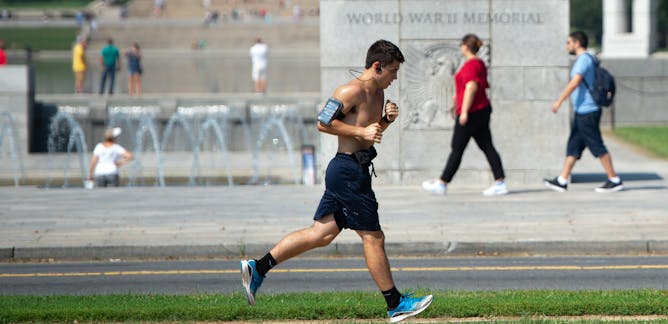
Articles on Bicycling
Displaying 1 - 20 of 353 articles

The heat comes from everywhere when you’re active outside on hot days – the Sun’s rays, the air around you, the ground and even your own body.

We’re seeing more big cars on the road. What does this mean for safety?

The study looked at who used a household bicycle, who didn’t, and why.

Male cyclists greatly outnumber female cyclists in Australia. New research points to ways to close the gap.

Symphonie of the Bicycle is a tribute to the value of laughter and comedy, and the power of theatre in these ruthless times.

Every kilometre cycled in France saves around one euro in healthcare costs, according to a recent analysis of decennial mobility survey.

The number of deaths on Australian roads has been increasing steadily year after year. It’s unacceptable not to act on the evidence of what works to boost road safety.

An elite athlete’s metabolism mostly looks different from a patient with COVID-19 − but their occasional similarities can reveal important insights into health and disease.

Many incentive programs promote e-bike use, but they aren’t necessarily targeting the right people for the right reasons.

By moving to scrap the Auckland regional fuel tax, the government continues a decades-long pattern of transport policy U-turns that leave the city – and country – without a sustainable way forward.

Support for road-user charging strengthens when people are assured that revenue goes into reducing traffic congestion, maintaining transport infrastructure, improving public transport.

If you’re thinking of buying a piece of cardio equipment for at-home workouts, here are the pros and cons.

Early in the pandemic, when there was much less traffic on the roads, people took to their bikes. But since then, fewer people are cycling, with rates now lower than in 2011.

Canada should invest in sustainable transportation infrastructure to accelerate the green transition.

Ensure your helmet complies with the national or international bicycle helmet standards, which should be stated on the label inside the helmet.

Cars are getting bigger on US roads, and that’s increasing pedestrian and cyclist deaths. A transport scholar identifies community-level strategies for making streets safer.

Cycling in Canada has been experiencing a great boom in recent years. Yet, there was no consistent and complete way to measure cycling infrastructure, until now.

LTNs were introduced to UK cities to create a more pleasant environment for pedestrians and cyclists - but they’ve become controversial.

Bike riders wear helmets and high-vis vests to reduce their vulnerability on the road. Problem is a new study finds this dehumanises cyclists, putting them more at risk of aggression from drivers.

Lagos is famous for its congested traffic. Cycling could help change this image.
